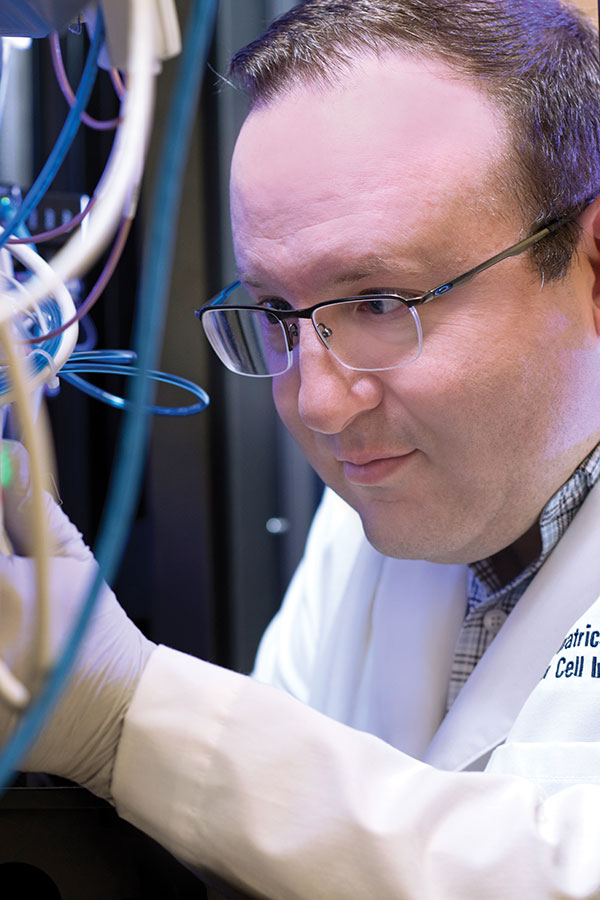Fitzpatrick named a Chan Zuckerberg Initiative Imaging Scientist
Award supports developing imaging methods, enhancing training at School of Medicine

Fitzpatrick
James Fitzpatrick, PhD, a professor of neuroscience and of cell biology & physiology at Washington University School of Medicine in St. Louis and director of the Washington University Center for Cellular Imaging (WUCCI), is one of 22 researchers worldwide named a Chan Zuckerberg Imaging Scientist by the Chan Zuckerberg Initiative.
Modern microscopy techniques can show how molecules fit together at near-atomic level resolution, identify the location of key proteins in a cell, and visualize changes in cells over time — providing insight into normal and pathological biological processes and aiding the search for better therapies. Imaging scientists play a critical role in developing and sharing such techniques, which are central to biomedical research and clinical practice. The selected imaging scientists will work at the interface of biology and microscopy hardware and software to help advance the imaging field and accelerate biomedical research.
As a part of the $1.2 million award, Fitzpatrick plans to improve imaging methods and expand the center’s education and outreach activities. For example, he is working to combine multiple modes of microscopy with the goal of generating near-atomic resolution structures of biologically significant macromolecules at their natural location within cells and tissues.
Since its inception five years ago, the WUCCI has trained and supported more than 1,250 scientists from more than 400 research labs at Washington University.
“My main focus has been to expand access to imaging technologies,” Fitzpatrick said. “Some questions are best answered by looking at what is happening under different conditions. With the technologies available in WUCCI, it is possible to visualize biological processes at scales ranging from atoms to living animals.”
Instrumentation, though, is only half of the equation, according to Fitzpatrick. “A key focus of ours is to help users build their imaging skills. Moving forward, I would like to enhance our training programs by leveraging video-based and virtual or augmented reality approaches.”
In addition, Fitzpatrick is developing a short course to aid beginner microscopists at Washington University in taking advantage of cellular imaging in their research.
One of the major challenges in biomedical research is the management of an ever-increasing amount of data, and imaging is no exception. Fitzpatrick has led two institutional projects to improve data management by developing a petabyte-scale data-storage system and a hybrid CPU/GPU-based scientific computing platform. Both systems are widely used at Washington University. He plans to continue working to enhance and grow this infrastructure to support the research and educational missions of the university.







